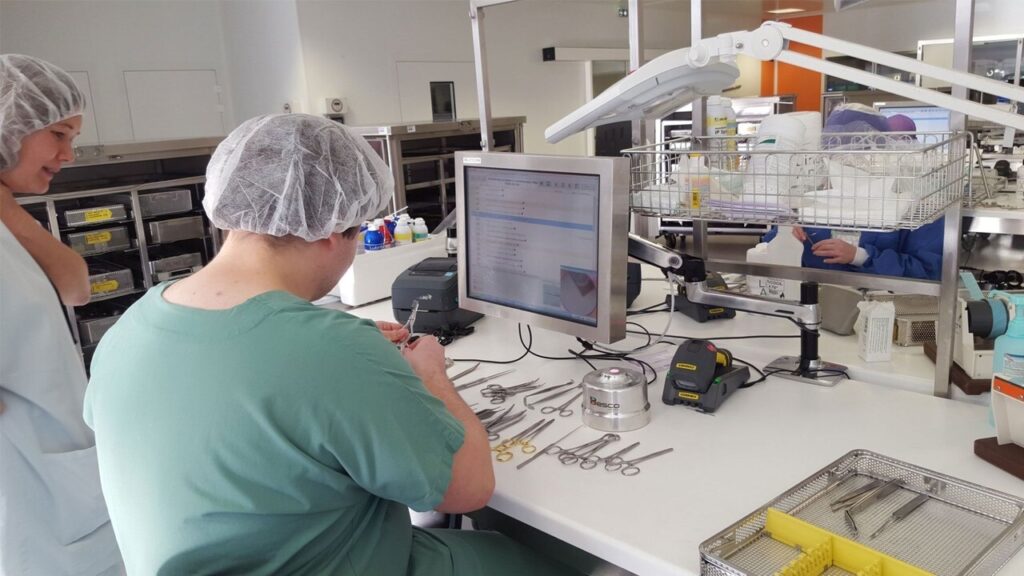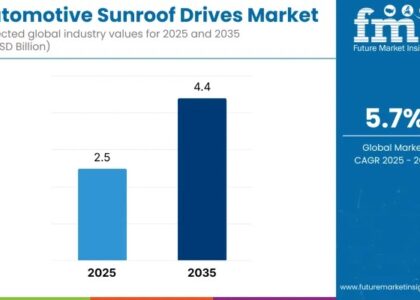The global Surgical Instruments Tracking System Market is estimated to be valued at USD 320.5 million in 2025 and is projected to reach USD 1,177.8 million by 2035, registering a compound annual growth rate of 13.9% over the forecast period.
Hospitals are supposed to be the safest place on Earth. But walk into any major operating room today, and you’ll find something astonishing: we still lose surgical instruments. Not metaphorically—literally. Tools vanish mid-surgery. Trays arrive incomplete. Critical equipment goes missing. And it keeps happening.
Enter surgical instrument tracking systems (SITS). They’re not flashy. They’re not expensive by hospital standards. But they are absolutely essential—and the world is finally waking up to that fact.
According to Future Market Insights, this overlooked corner of medical technology is now booming. The market is set to explode from $287.6 million in 2023 to more than $875 million by 2033, fueled by hospitals’ growing need for surgical precision, regulatory compliance, and risk management.
Get Sample Report: – https://www.futuremarketinsights.com/reports/sample/rep-gb-14251
The truth behind the growth
FMI projects a 14.2% CAGR for the SITS market over the next decade. But that number doesn’t tell the whole story. What’s really happening is this: hospitals are finally being held accountable for what should have never been negotiable—knowing where their surgical instruments are, all the time.
This isn’t about profitability. It’s about safety. Dignity. Basic competence.
In regions like North America and Europe, where malpractice lawsuits and audit scrutiny run high, adoption is accelerating. North America alone is projected to hold over 38% of the global market by 2033. The reason? You can’t keep calling yourself “world-class” if you’re still using a clipboard to track a scalpel.

Barcodes aren’t sexy. But they’re saving lives.
Right now, barcodes dominate the landscape—they account for more than 82% of tracking systems globally, per FMI. That’s no accident. They’re cheap. Reliable. Easy to engrave. And they work.
A simple scan tells you where a tool is, where it’s been, and whether it’s sterile. That’s not innovation. That’s basic hygiene. Yet somehow, many hospitals still aren’t doing it.
Here’s the uncomfortable truth: some healthcare administrators would rather risk a lawsuit than invest in software. That’s not oversight—that’s negligence.
But change is coming. Slowly. Reluctantly. And often only after something goes wrong.
The U.S. is ahead—but not by much
Despite billion-dollar operating budgets, many hospitals in America still rely on fragmented digital logs—or worse, paper records—to manage surgical tools. That’s reckless. In 2025, if your hospital doesn’t have a real-time tracking system in its OR, you’re not behind the curve. You are the risk.
And let’s not pretend the stakes are abstract. Every miscounted clamp, every delayed tray, every unsterile blade that makes it to the table increases the chance of infection, delay, or disaster.
You don’t need another whitepaper to prove it. Just ask the scrub nurse who had to halt surgery to search for a missing retractor.
Tracking isn’t an upgrade. It’s a moral obligation.
SITS technology is no longer a “nice-to-have.” It’s the difference between chaos and clarity in surgery. Hospitals aren’t adopting these systems because they’re trendy—they’re adopting them because they’re tired of lawsuits, insurance claims, and near-misses that never should’ve happened.
The software segment, according to FMI, is set to dominate the market. That’s no surprise. Real-time data, analytics, sterilization records—this is where modern medicine needs to be. Not guessing. Not hoping. Knowing.
Final cut: This isn’t optional anymore
Every day a hospital delays implementation is another day it gambles with lives. Surgical instrument tracking is not expensive. It’s not difficult. It just requires willpower.
So enough with the excuses.
In 2025, failing to know where your surgical tools are isn’t a tech issue. It’s a liability. A reputational stain. A moral failure.
Hospitals, administrators, systems: the message is clear. Track it. Or get out of the way.
Explore In-Depth Analysis-Click Here to Access the Report:- https://www.futuremarketinsights.com/reports/surgical-instruments-tracking-system-market
Key Segmentation
By Component:
- Software
- Hardware
- Services
By Technology:
- Barcode
- Radio Frequency Identification (RFID)
By End User:
- Hospital
- Public Hospital
- Private Hospital
- Others
By Region:
- North America
- Latin America
- Western Europe
- Eastern Europe
- East Asia
- South Asia Pacific
- Middle East and Africa





